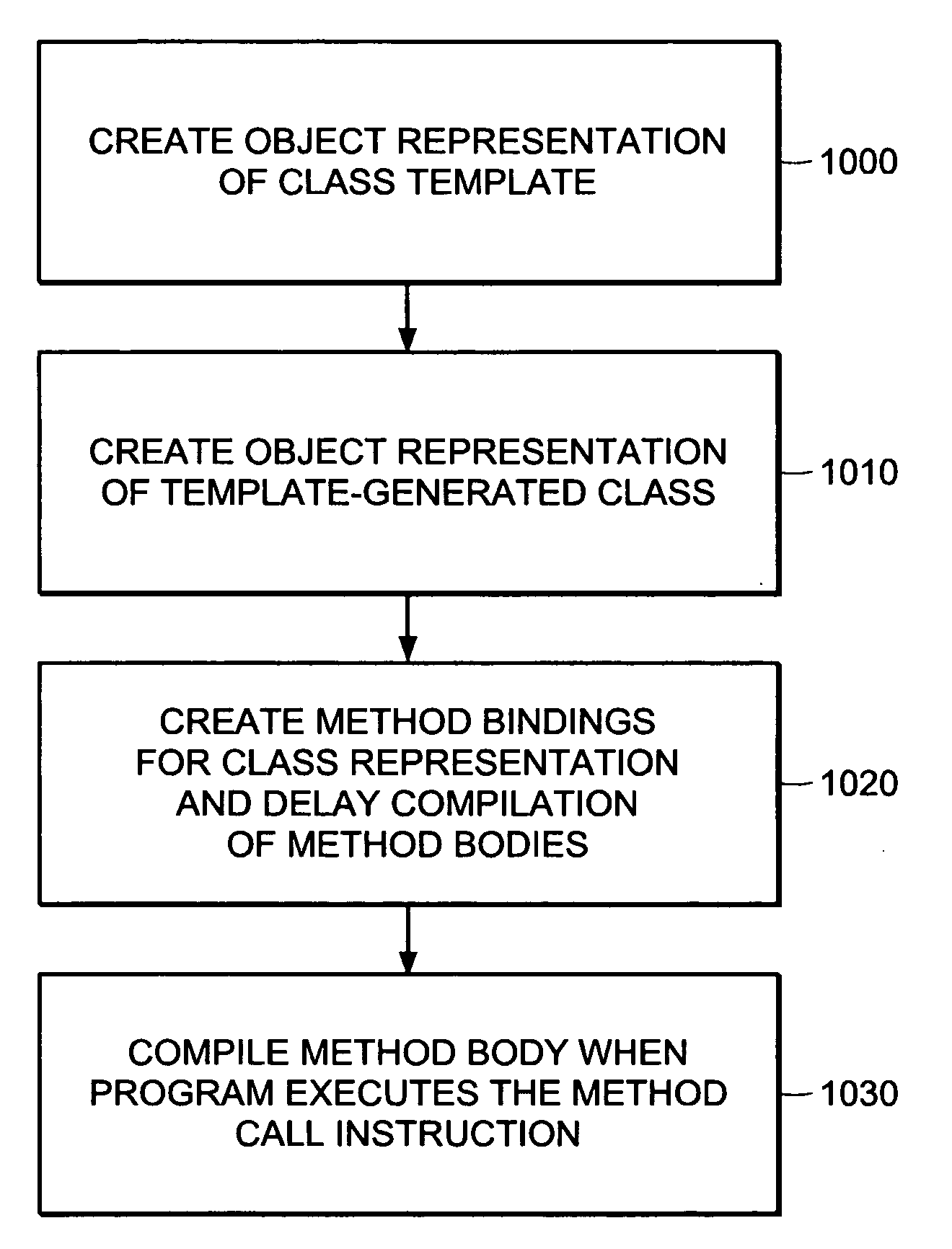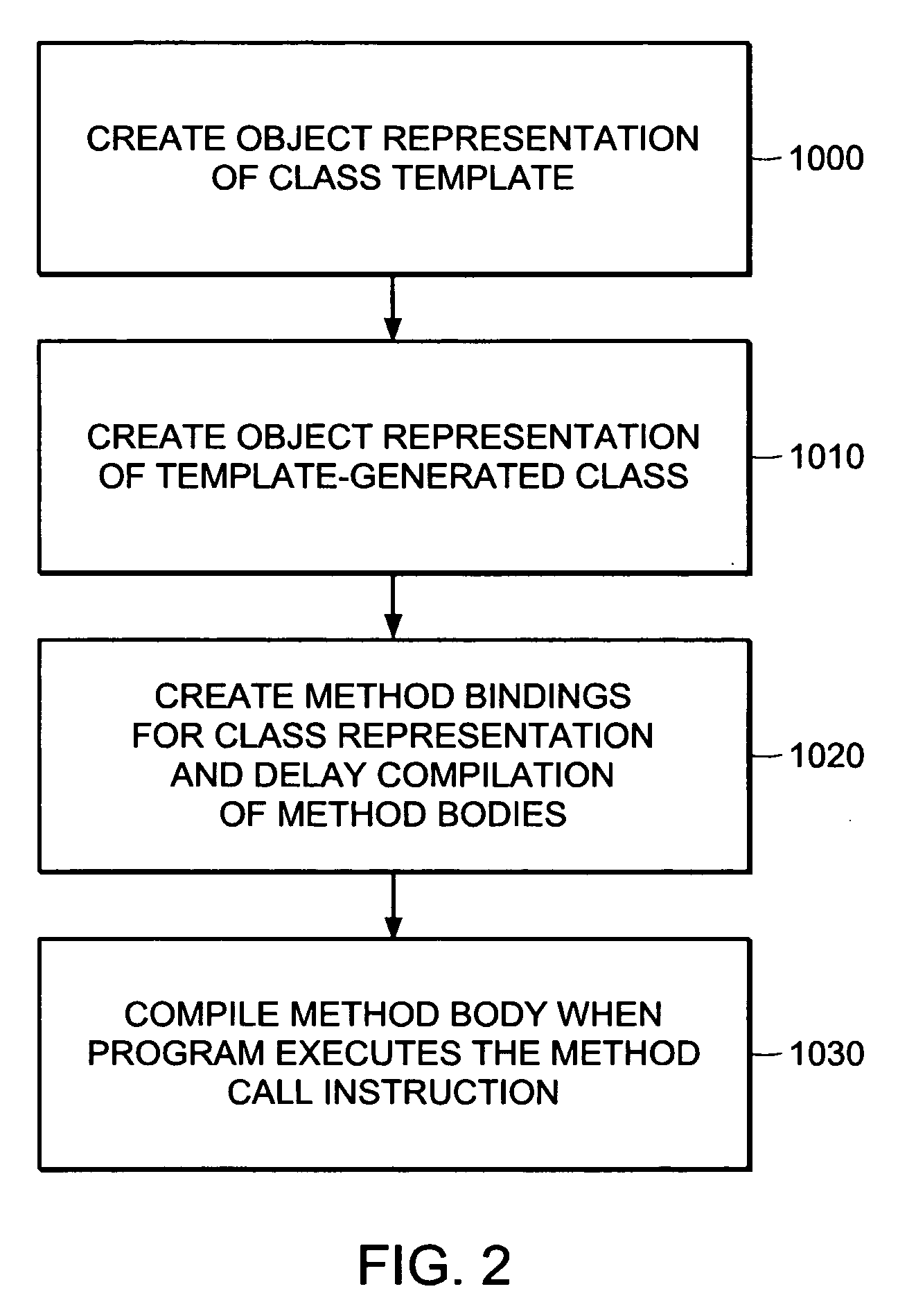Lazy compilation of template-generated classes in dynamic compilation execution environments
a dynamic compilation and execution environment technology, applied in the direction of code compilation, program control, instruments, etc., can solve the problems of wasting time and memory, requiring more space on the disk, and unable to dynamically compile an entire program, so as to reduce the amount of code generated and reduce the amount of time required to perform the compilation
- Summary
- Abstract
- Description
- Claims
- Application Information
AI Technical Summary
Benefits of technology
Problems solved by technology
Method used
Image
Examples
Embodiment Construction
[0048]A description of preferred embodiments of the invention follows.
[0049]FIG. 2 is a flow diagram illustrating a high level overview of a process for lazy compilation of template-generated classes in dynamic compilation execution environments according to an embodiment of the invention. The advantages include shorter compilation times and decreased code generation.
[0050]In step 1000, source code defining the class template is compiled into an object representation suitable for use as a resource when subsequently compiling classes based on the template. An exemplary class template representation is shown in FIG. 3A. This class template representation provides a resource of source code for compiling different template-generated classes. In particular, the class template representation includes objects storing source code representations for each method defined within the template. These objects are referred to as method descriptors.
[0051]The source code representations stored in th...
PUM
 Login to View More
Login to View More Abstract
Description
Claims
Application Information
 Login to View More
Login to View More - R&D
- Intellectual Property
- Life Sciences
- Materials
- Tech Scout
- Unparalleled Data Quality
- Higher Quality Content
- 60% Fewer Hallucinations
Browse by: Latest US Patents, China's latest patents, Technical Efficacy Thesaurus, Application Domain, Technology Topic, Popular Technical Reports.
© 2025 PatSnap. All rights reserved.Legal|Privacy policy|Modern Slavery Act Transparency Statement|Sitemap|About US| Contact US: help@patsnap.com



